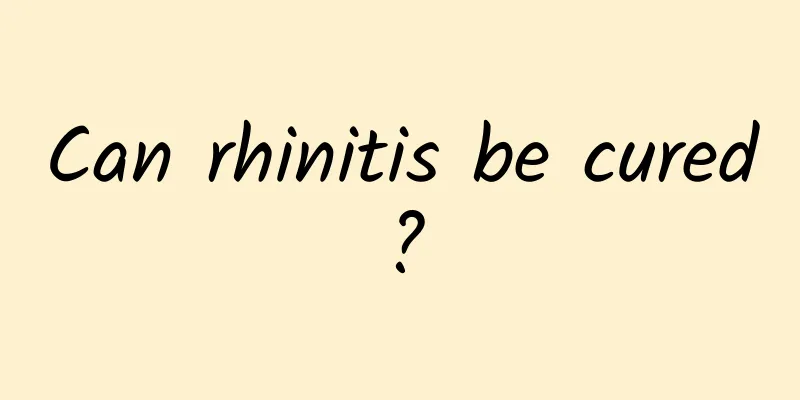How safe is ureteroscopy-laser lithotripsy?

|
Ureteroscopy-laser lithotripsy is a common method for treating ureteral stones. This is a new type of minimally invasive surgical treatment method that has emerged in recent years. This surgical method is simpler, safer, and saves time. Its success rate is also relatively high, so ureteroscopy and laser lithotripsy is a surgical method with relatively high treatment efficiency and is popular among most patients. How safe is ureteroscopy-laser lithotripsy? 1. Less painful treatment Compared with the commonly used extracorporeal shock wave lithotripsy and pneumatic ballistic lithotripsy, laser lithotripsy has strong safety and wide applicability. Extracorporeal shock wave lithotripsy uses a liquid-electric or electromagnetic shock wave generator to emit high-energy shock waves that penetrate the human body and focus on urinary stones in the body, releasing energy to break up the stones, and the stone fragments are naturally discharged. The machine requires accurate positioning by X-ray or B-ultrasound. The application of laser has brought the treatment of urinary stones to a new level. The laser wavelength is μm. Non-membranous nephropathy lithotripsy, such as non-pulsed carbon dioxide laser, utilizes thermal effects to vaporize stones due to temperature. The stone is crushed directly under the machine, so it may not be completely crushed at one time, and the efficiency is low. Shock waves can also cause tissue damage when penetrating the body, such as destruction of glomeruli and renal tubules, and ureteral stenosis. Repeated extracorporeal shock wave lithotripsy can lead to decreased renal function and even kidney atrophy. When pneumatic lithotripsy is used to treat stones in the middle and lower ureters, the stones can easily be flushed back into the upper ureter or kidney, causing the surgery to lose its target. Moreover, it can only be performed under a rigid ureteroscope, so it is almost powerless against upper ureteral stones and kidney stones. 2. Safe and time-saving This is not the case with laser lithotripsy. During the lithotripsy process, stones rarely move and the recoil rate is very low, thus greatly improving efficiency. It can directly break up the stones through cystoscopy, ureteroscopy and percutaneous nephroscope without causing tissue damage. Moreover, the laser fiber is flexible and can be introduced not only through a rigid ureteroscope but also through a flexible ureteroscope for lithotripsy. Therefore, it can effectively crush ureteral stones and kidney stones in any part of the body. Using thiocyanate laser to treat bladder stones is a piece of cake. You only need to introduce the thiocyanate laser fiber through the working channel of the cystoscope and then emit the laser. After a few seconds, the stones will be broken up and discharged through the urethra. This is both safe and time-saving. 3. The single-time success rate for treating bladder stones is above 95% and can reach 100%. This surgery has no risk of perforation or bleeding, and can also treat concurrent urinary tract tumors, ureteral polyps, and membranous nephropathy. The average operation time is 25 minutes, the hospital stay is less than 3 days, and bladder stones can be treated on an outpatient basis. Since the particles of laser lithotripsy are finer and in powder form, the stone expulsion time after lithotripsy is significantly shortened. It can be seen that laser can effectively crush urinary stones of any location and composition with its unique high efficiency. It can be crushed into powder, which is a "new weapon" for treating urinary stones that is efficient, safe, low-cost, time-saving and has extremely low side effects. my country's laser application technology has also made great progress in the past two years. Its performance and reliability are not inferior to foreign products. It has also broken the foreign high-price monopoly, allowing ordinary patients to truly afford this high-tech technology. There are already several companies in China that are producing 鈥淨laser, which has good cost-effectiveness, safety and stability. |
<<: Does horizontal lines on the lower back mean kidney deficiency?
>>: What is the cause of three ureteral strictures?
Recommend
What are the clinical manifestations of infants with hemangiomas?
Hemangiomas are tumors on the blood vessels of th...
Will eating too many pears cause diarrhea?
Pear is a fruit that is fragrant and sweet, crisp...
What medicine should I take for spermatorrhea due to kidney deficiency?
Most men are afraid of one disease, and that is k...
What to drink after a workout
Many friends still like to exercise, but the body...
What Chinese medicine should I take for lung, spleen and kidney deficiency?
Middle-aged and elderly people are more concerned...
What factors affect human bone health?
When people reach a certain age, their bones are ...
Stomach and rib pain
When the ribs hurt, it will affect the gastrointe...
Disadvantages of Mesotherapy
Mesotherapy is an emerging beauty method in recen...
What are the symptoms of a bad spleen?
A bad spleen is a problem that needs to be vigila...
What are the effects and functions of labradorite
Many people have the habit of wearing jewelry. So...
Postoperative care for carpal tunnel syndrome
I believe that many people do not know much about...
Do closed comedones have to be picked out?
Closed comedones are a relatively common type of ...
Bacterial skin infections
The skin is the largest organ in the human body, ...
How to make oatmeal porridge for weight loss, delicious and weight-loss oatmeal porridge
Oatmeal is a favorite food for many people who ar...
Is it okay to have a fever and sweat?
When you have a fever, your body temperature is g...









